Unlimited number of periodic decagonal tiling (2D-crystal)
The fat and thin rhombus tiles with different acute angles of 36 and 72 degrees can combine to form six different decagonal tiles, of different inner structures, Each decagons composed of ten rhombuses , five thin rhombus and five fat rhombus , where a, b, c, d, e, f, are marked for six different decagons respectively in Figure 1. For the fat rhombus in the decagons of type-a, type-d, type-e and type-f are highlighted in red, purple red, yellow, and light blue, respectively. These six decagons which can be regarded (considered) as basic unit, instead of two types of rhombuses, to fabricate (infinity) tiles in this paper. And be noted that only type-a decagonal tile is five-fold symmetric and the rest decagons are only mirror symmetric.
With the coupling and tessellation schemes developed, using type-a decagons as base, the other five different decagons can be coupled accompanying with type-a decagons in five different orientations and produced nearly fifty 50 coupling pairs. as demonstrated in fig 2. All these coupling pairs All these coupling pairs could be randomly permutation tessellated to form unlimited periodic Penrose tiling (crystals) as shown in fig 3.
The unit cell is a rhombus surrounded by any four A-type decagons with the same orientation, which can be easily identified and intercepted from figure 3, some results are shown in figure 4a.. The tiles in Figure 4a are tessellated to form new translational crystals, as shown in Figure 4b. This new periodic tiling (crystal) is clearly structurally completely different from the original (parent) crystal in Figure 3.
This very special decagonal crystal has properties that are different from traditional cognitive crystals. This will also be the most fascinating place to study quasi crystal (latter on) in the future.
Figure 1 Six different colorful decagons.
Figure 2. Coupling pairs using type-a decagon as base.
Figure 3. Periodic Penrose tiling (crystal)
Figure 4 ( a)unit cell intercepted from tiling in fig 3 (b) periodic tiling generated by tessellation of unit cell
Unlimited number of periodic decagonal tiling (2-D crystals)
Chung Yuan Kung
Department. of Electrical Engineering, National Chung Hsing University. 145 Xingda Road., South Dist. Taichung City 40227. Taiwan. Telephone: 886-4-22850359, E-mail Address: cykung@dragon.nchu.edu.tw.
Key words:
The fat and thin rhombus tiles with acute angles of 36 and 72 degrees respectively can combine to form six different decagonal tiles of different inner
structures. Each decagon is composed of ten rhombuses: five thin rhombuses and five thick rhombuses; where a, b, c, d, e, and f are marked for six different decagons.
(Figure 1) The thick rhombuses in the decagons of type-a, type-d, type-e and type-f are highlighted in red, magenta, yellow, and light blue, respectively. These six
decagons can be regarded (considered) as basic units; we can utilize two of these basic units to fabricate (infinity) tiles in this paper. It is noted that only type-a decagonal tiles are five-fold symmetrical, type-c is neither five-fold symmetrical nor mirror symmetrical, and the rest of the decagons are only mirror symmetrical.
With the coupling and tessellation schemes developed, and using type-a decagons as base, the other five different decagons can be coupled with type-a
decagon in ten different orientations to produce nearly fifty 50 coupling pairs as demonstrated in fig 2. All these coupling pairs can be randomly tessellated to form
infinite periodic Penrose tiling (crystals) as shown in fig 3.
The unit cell is a rhombus surrounded by four A-type decagons with the same orientation, which can be easily identified from figure 3. Some results are shown in
figure 4a. The tiles in Figure 4a are tessellated to form new translational crystals, as shown in Figure 4b. This new periodic tiling (crystal) is clearly structurally different
from the original (parent) crystal in Figure 3. This very special decagonal crystal has properties that are different from traditional cognitive crystals. This will be the most
fascinating area of quasicrystal study in the future.
Figure 1 Six different colorful decagons.
Figure 2. Coupling pairs using type-a decagon as base.
Figure 3. Periodic Penrose tiling (crystal)
Figure 4 ( a)unit cell intercepted from tiling in fig 3 (b) periodic tiling generated by tessellation of unit cell
New part Start from from here
Figure 5 (a) The unit cell on the right side of Figure 3a with circles representing atoms added, (b) the unit cell in Figure 5a with the rhombus tiles removed
If two circles representing two atoms of different sizes are located at the center of two rhombuses, taking the picture on the right side of Figure 4(a) as an example,
We will get periodic decagonal tiles with circles. The large blue circle is located at the center of the thick rhombus, and the small red circle is located at the center of the thin rhombus, as shown in Figure 5(a).. The rhombus appearing in Figure 5a is removed, and a periodic arrangement of two atoms of different sizes is obtained as shown in Figure 5b. This is the best efficient representation of a quasicrystal (exhibiting five-fold symmetry) associated with periodic decagonal tiles, which will show (reveal) a five-fold symmetric diffraction pattern.
Quasicrystals of this design, showing in fig 5b, are useful for matching the AFM surfaces of real quasi crystals and identifying differences in quasicrystals.
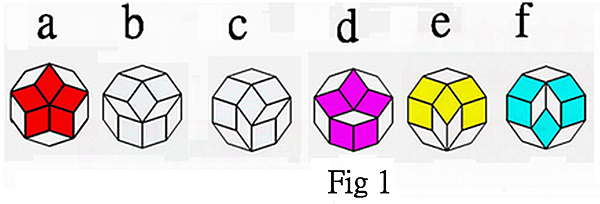
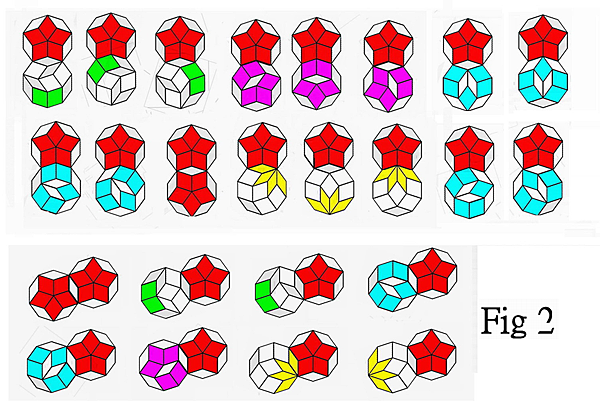

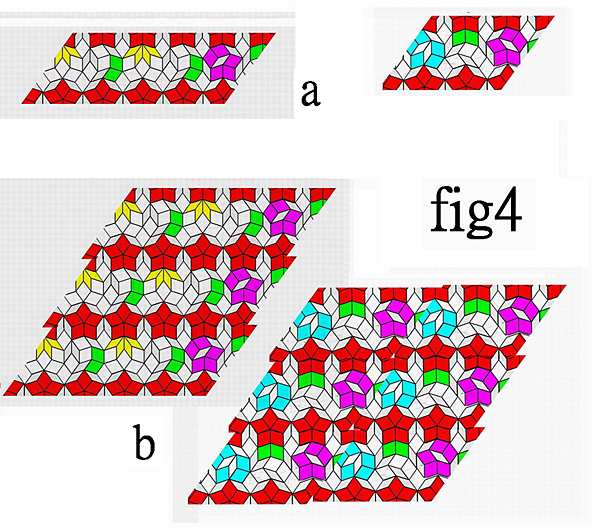

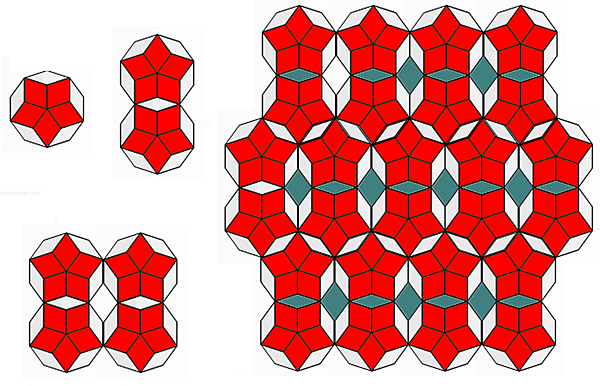



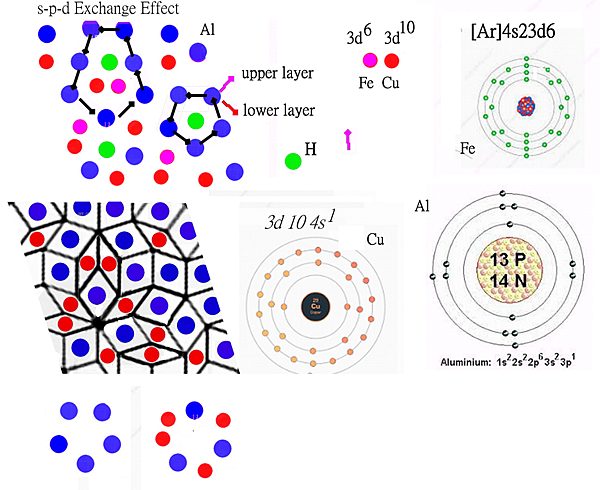



 留言列表
留言列表


